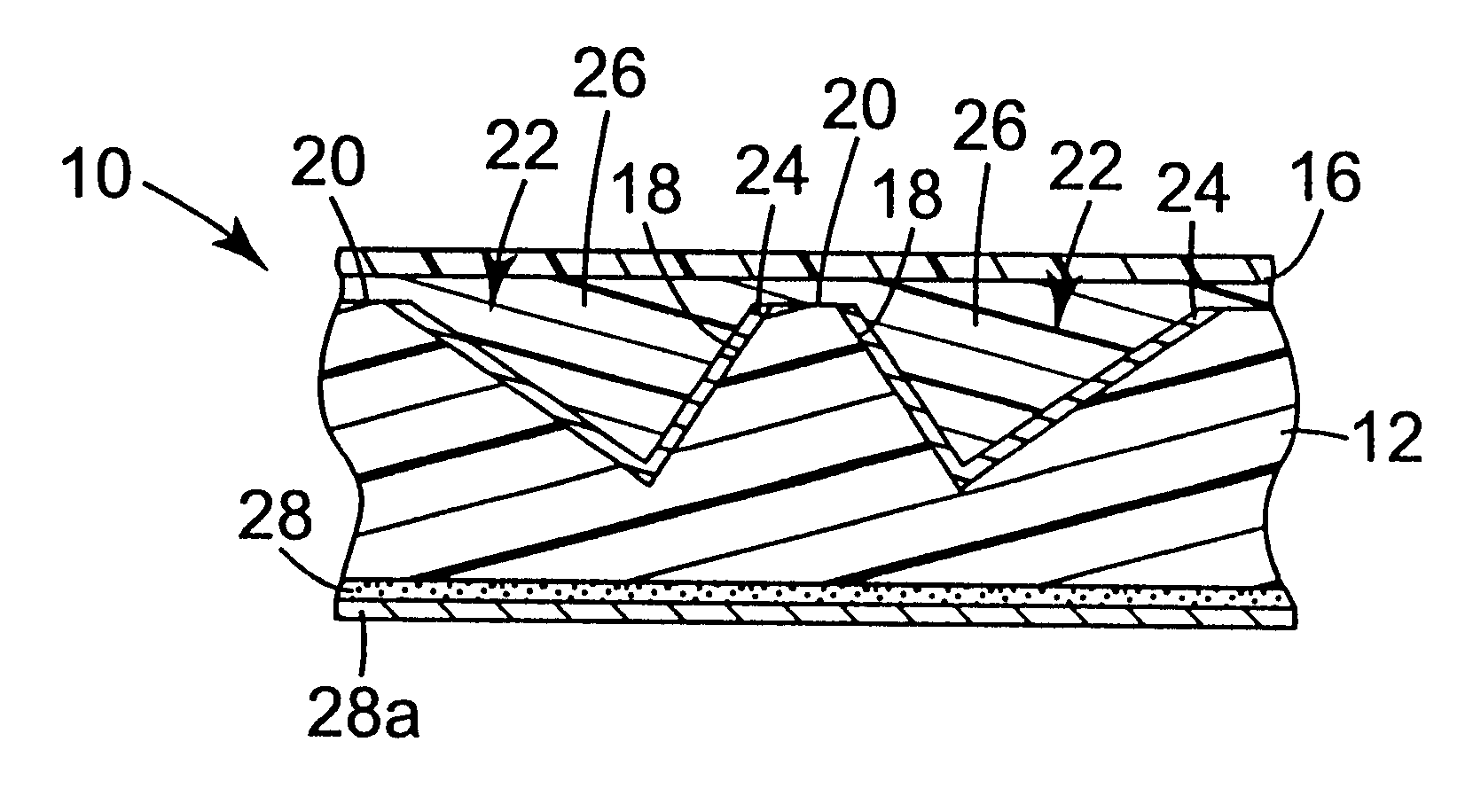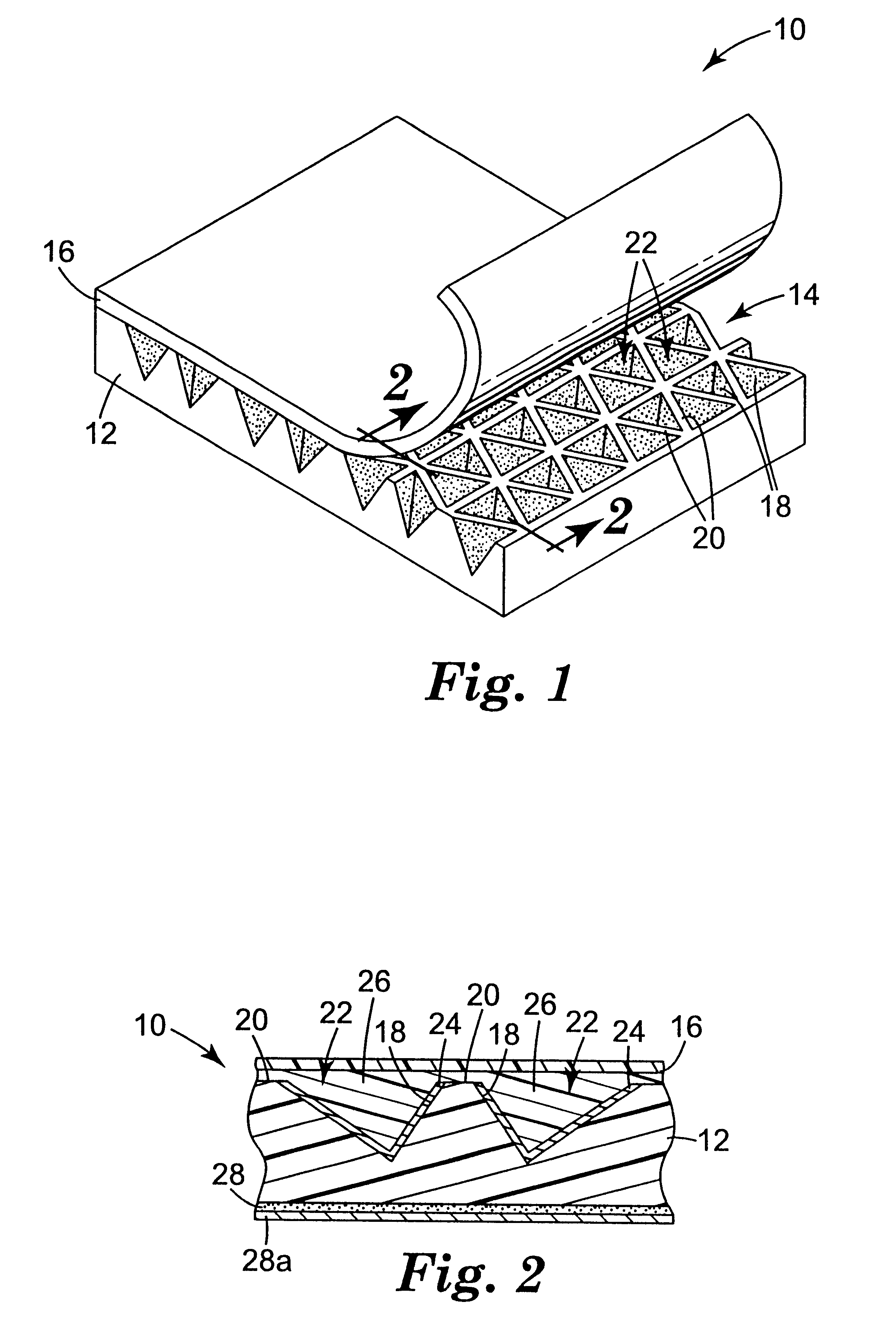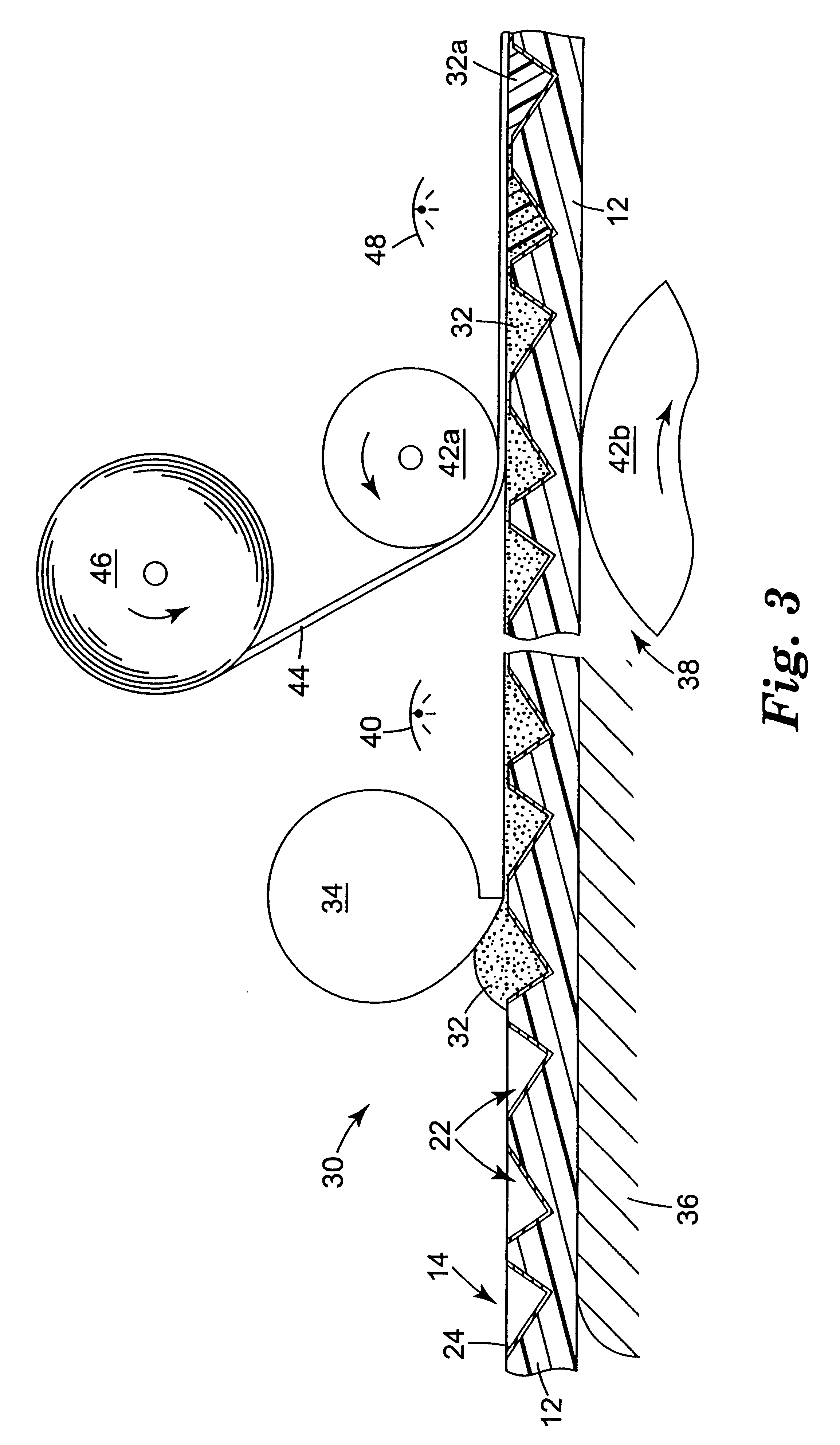Cube corner cavity based retroeflectors with transparent fill material
a retroeflector and cube corner cavity technology, applied in the field of radiation cureable materials, can solve the problems of undesirable filling, essentially nullifying the last advantage, and undesirable filling, and achieve the effects of reducing cost, good flexibility of sheeting articles, and maintaining functionality and durability
- Summary
- Abstract
- Description
- Claims
- Application Information
AI Technical Summary
Benefits of technology
Problems solved by technology
Method used
Image
Examples
examples 1-4
Four body layers were embossed with a mold to impart a structured surface similar to that shown in FIG. 1. The mold had a structured surface consisting of three sets of flat-bottomed grooves, and was the negative replica of a prior mold whose upper portions had been ground down flat with an abrasive. The embossed body layers were made of polycarbonate. The body layers for Examples 1 and 2 had a thickness of about 43 mils (1.1 mm) and included sufficient TiO.sub.2 filler to make them opaque with a diffuse white surface appearance. Those for Examples 3 and 4 had a thickness of about 18 mils (0.46 mm) and included instead a red dye to give a diffuse red surface appearance. The structured surface of each body layer consisted essentially of three intersecting sets of parallel ridges. Two of the sets, referred to as "secondary" ridge sets, had uniform ridge spacings of about 16 mils (408 .mu.m) and intersected each other at an included angle of about 70 degrees. The other set of parallel ...
examples 5-16
Twelve body layers made of polystyrene (type 498 Styron brand, available from Dow Chemical Co., Midland, Mich.) were embossed with a mold to impart a structured surface consisting essentially of three intersecting sets of parallel ridges. Six of the body layers (Examples 5-10) were natural, clear polystyrene and the remaining six (Examples 11-16) used polystyrene compounded with a titanium dioxide concentrate to impart diffuse whiteness. The body layers were each about 9 mils (230 .mu.m) thick. Two of the three sets of parallel ridges, referred to as "secondary" ridge sets, had uniform ridge spacings of about 5.74 mils (146 .mu.m) and intersected each other at an included angle of about 70 degrees. The other set of parallel ridges, referred to as the "primary" ridge set, had a uniform ridge spacing of about 5 mils (127 .mu.m) and intersected each of the secondary ridge sets at an included angle of about 55 degrees. This produced cube corner cavity matched pairs having a cavity depth...
example 17
A roll of body layer retroreflective sheeting substantially the same as those of Examples 5-16 was prepared. The same structured surface geometry and reflective aluminum film was used.
A pressure-sensitive adhesive resin composition was prepared by mixing 75 parts of isooctyl acrylate and 25 parts of N-vinylcaprolactam to yield about 2000 grams. Then 0.05 pph of a photoinitiator (2,4,6-trimethylbenzoyldiphenylphosphine available as Lucirin.TM. TPO from BASF Corp.) was added. Nitrogen was bubbled through the composition and the composition was exposed to Sylvania black lights to partially polymerize it to a viscosity of about 1700 centipoise (1.7 Pa-s). The composition viscosity was measured using a model LVF Brookfield Viscometer equipped with a number 4 spindle at 60 rpm at room temperature. In the partial polymerization process, the temperature of the composition increased from 23.degree. C. to about 38.degree. C. The composition was then sparged with air and cooled to room tempera...
PUM
| Property | Measurement | Unit |
|---|---|---|
| elastic modulus | aaaaa | aaaaa |
| elastic modulus | aaaaa | aaaaa |
| elastic modulus | aaaaa | aaaaa |
Abstract
Description
Claims
Application Information
 Login to View More
Login to View More - R&D
- Intellectual Property
- Life Sciences
- Materials
- Tech Scout
- Unparalleled Data Quality
- Higher Quality Content
- 60% Fewer Hallucinations
Browse by: Latest US Patents, China's latest patents, Technical Efficacy Thesaurus, Application Domain, Technology Topic, Popular Technical Reports.
© 2025 PatSnap. All rights reserved.Legal|Privacy policy|Modern Slavery Act Transparency Statement|Sitemap|About US| Contact US: help@patsnap.com



